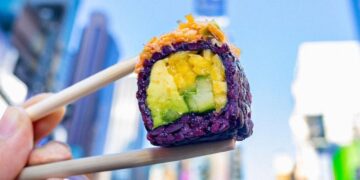[ad_1]
The Los Angeles basin was California’s first wine nation, with tens of 1000’s of winery acres and a whole lot of wineries that quenched the state’s thirst from the 1830s. However the post-World Struggle II improvement growth made constructing homes extra worthwhile than rising vines. The recollections of vintages previous have been buried beneath asphalt and flats.
A brand new era of winemakers desires to alter that. As they craft and serve their wines amid the city sprawl, they’re discovering neglected or forgotten vineyards within the area’s hidden canyons and excessive deserts.
Some supply from the handful of remaining vineyards that have been planted almost a century in the past within the Cucamonga Valley. Just a few take grapes from vines at Mission San Gabriel to attach with California’s colonial roots.

Related Goals
The morning wind spins generators and tosses tumbleweeds throughout photo voltaic farms within the Antelope Valley of northeastern Los Angeles County as Monty Swayze reveals off his seven-acre winery, planted 17 years in the past.
Right here, he grows Zinfandel, Grenache, Alicante Bouschet, Sémillon and Sauvignon Blanc.
The Sauvignon Blanc is utilized in California Crackler, a glowing mix made by Angeleno Wine Company, which is owned by Amy Luftig Viste and Jasper Dickson. Luftig Viste and Dickson, together with Patrick Kelley of Cavaletti Vineyards and Mark Blatty of Byron Blatty Wines, keep in mind how shocked they have been to search out these vines.
“You wouldn’t anticipate the winery to do in addition to it does,” says Kelley, in reference to its desert panorama, which hugs the southern fringe of the Sierra Nevada mountain vary however sits simply 75 miles from the Hollywood signal. “Everybody was skeptical after we got here out right here.”
L.A. vines require completely different cover administration methods because of the warmth and sunshine.
The three wineries began independently with an analogous imaginative and prescient to concentrate on Los Angeles County-grown grapes, solely to search out out about one another later. Quite than compete over restricted fruit, they shaped the Los Angeles Vintners Association in 2019. That’s allowed them to deal with challenges collectively, from viticultural quirks to industrial resistance.
“While you discuss to individuals who make wines from the Central Coast or the North Coast, they appear to have completely different experiences than we do,” says Blatty. These L.A. vines require completely different cover administration methods because of the warmth and sunshine, and harvest there tends to begin early within the season and go very late.
“What’s been so nice about turning into associates and getting all on the identical web page is that we’re not alone,” says Blatty. “We have now our personal little assist group.”

Gross sales have been gradual at first, however that’s beginning to change. “Folks would are available in extraordinarily skeptical, and perhaps even nervous, about making an attempt the wines,” says Luftig Viste. “Folks thought they might style like tires or smog.”
As soon as individuals strive the wine, many are fortunately shocked. “The commonest remark I hear is, ‘Wow, these are literally good.’ ” says Kelley.
Philosophy professor-turned-vintner Abe Schoener can also be betting on the area. He’s dreamed of beginning an L.A. vineyard since 2005. Two years in the past, he left rural Northern California, the place he’d made The Scholium Project wines since 2000, to arrange store alongside the L.A. River with Winemaker Rajat Parr.
“The connection to city wineries and vineyards in cities goes again to Rome,” says Schoener.
Such involvement from established gamers will solely assist the momentum.
“There was a time at first the place industrial patrons wouldn’t provide the time of day,” says Blatty. “But when we will simply get wine into somebody’s glass, we will open their thoughts and alter their thoughts about L.A. wine.”

Shared Vines
Angeleno Wine Firm operates in Mission Junction, a graffiti-decorated warehouse district simply east of downtown Los Angeles, close to the place the Riboli household has run San Antonio Winery since 1917. Dickson works full-time within the vineyard, whereas Luftig Viste maintains a day job within the county’s public well being division. (“We’re a bit busy,” she says, referring to her pandemic workload.)
It took them three years to discover a location.
“Not solely are there 15 wines popping out of this winery, however these wines all drink very in another way from one another.”—Mark Blatty of Byron Blatty Wines
“L.A. zoning nonetheless considers wineries to be heavy industrial manufacturing, like airplane engines and petrochemicals,” says Luftig Viste. Distinctive Tinseltown points proceed, like having to close down for the weekend so Michael Bay might shoot an motion movie on their block.
Byron Blatty Wines shares a facility in Santa Clarita with manufacturers like Pulchella and Hoi Polloi. These wineries purchase fruit from the Central Coast, however the facility lately welcomed a brand new Southern California-focused producer, Acri Wine Company.
A former tv producer who labored on Real Housewives of New York City for 10 years, Blatty owns his vineyard along with his spouse, Jenny Blatty, a tv producer for Warner Bros.’ Stage 13 Community. The couple simply had their second little one.
Kelley’s vineyard lies simply west, within the Ventura County metropolis of Moorpark. A pharmaceutical govt by day, Kelley named his model Cavaletti after the smallest of horse-training jumps, a nod to each his equestrian-inclined daughter and spouse, who works as an equine masseuse. He additionally grows grapes in his Santa Rosa Valley yard and sources from throughout Ventura County.

All three wineries purchase grapes from most of the similar vineyards, from the Malibu Coast and Bel Air (the place Moraga Vineyards has existed since 1989) to Mission San Gabriel, the place they’ve harvested grapes from vines planted within the 1800s. In addition they supply from Antelope Valley of the California Excessive Desert, the official appellation identify accepted in 2011. Even simply from Swayze’s scant seven acres, the three manufacturers make about 15 mixed wines every classic.
“Not solely are there 15 wines popping out of this winery, however these wines all drink very in another way from one another,” says Blatty, whose wines are typically the richest. Angeleno tends to be leaner, and Cavaletti sits within the center.
In the identical appellation, Lee Williams began to develop grapes in 2001, as an escape from his profession in nursing.
“One thing about grape rising was calming, getting my fingers soiled not in blood, however within the soil,” says Williams, whose Golden Star Vineyards grows Tempranillo, Cabernet Sauvignon, Muscat of Alexandria and Malbec.
He’s now president of the Antelope Valley Wine Growers Association, which incorporates a couple of dozen growers over the almost 700-square-mile appellation. He additionally buys grapes from different vineyards, a lot of which have been initially planted by Efren Chavez.
A winery employee in Sonoma County since 1978, Chavez got here to the Antelope Valley in 1999. His efforts launched the fashionable winery motion. Chavez died in June 2020 at age 61.
Malbec additionally stars on the Smith Family Vineyard, which lies simply east of a well-liked state poppy reserve.
“We realized that Antelope Valley and Mendoza have fairly comparable climates,” says Blatty of the Argentinian area. “It ought to come as no shock that [varietal grapes] like Malbec do nicely.”

Forgotten Locations
As you drive south into the Sierra Pelona Mountains, the San Andreas Fault carves a dramatic panorama that options pure sag ponds referred to as Lake Hughes and Elizabeth Lake. Final yr, tipped off by tipsy clients on Valentine’s Day, Kelley found a whole lot of head-trained, unirrigated vines subsequent to the group’s elementary college.
Data present that they have been planted by pioneer John Munz round 1899. They have been proven to be of the Mission selection, in accordance with an evaluation performed by researchers on the University of California, Davis.
With the assistance of volunteers and fellow vintners, Kelley has chopped again the yucca stalks, purple buckwheat and scraggly coyote bush that choked these vines, bringing a lot of them again to life.
“One thing about grape rising was calming, getting my fingers soiled…within the soil.”—Lee Williams of Golden Star Vineyards
“They have been joyful to have us farm it,” he says of the varsity district. “That they had no concept there was something there. It was only a brushy hillside.”
Over splashes of Cavaletti rosé, Blatty regarded on the vines which have been unearthed, handled with compost and given the possibility to as soon as once more develop. “To me,” he says, “this winery simply parallels the entire Los Angeles wine revival.”
Main away from the lakes, by the Leona Valley (accepted as an appellation in 2010), and down into the Sierra Pelona Valley (accepted in 2011), the highways go just a few dying vineyards. Water provide is a matter for these arid lands, however property wineries like Agua Dulce and Reyes survive alongside the Outdated Sierra Freeway.
That’s additionally the place to search out the inexperienced oasis overseen by Juan Alonso, a Spaniard from Galicia who was skilled as a chef in France. He ventured first to the Canary Islands, after which to Los Angeles in 1973.

In 1980, he bought a rundown biker bar and recast it as a French restaurant with an intensive cellar named La Chene. He began to plant in 1995, the place he expanded acreage yearly for a few years.
“This wasn’t one thing that I needed to do,” says Alonso of turning into a restaurateur, vintner and motelier, his energized eyes glimmering from behind a thick beard and weathered pores and skin. “It simply occurred.”
At this time, the almost seven-acre winery, whose fruit now goes virtually totally to Angeleno and Blatty, options Grenache, Tempranillo, Tannat, Treixadura, Godello, Loureiro, Albariño and three rows of probably the oldest Mencía in California.
“The wines naturally come out fairly mellow, despite the fact that it’s a heat space,” says Dickson. “You don’t get massive concentrated wines. They’re extra mellow and extra elegant.”

Cucamonga Connection
From 1838 till the suburban explosion of the Nineteen Seventies, the Cucamonga Valley, simply east of Los Angeles County, thrived as a viticultural hub. That wasn’t obvious by the point David Potter of Municipal Winemakers grew up there within the Nineteen Eighties.
“Town’s brand is a bunch of grapes, and there’s a harvest pageant,” says Potter of Rancho Cucamonga.
“Nevertheless it’s all form of lip service as a result of the wine business there may be just about lifeless.”
Potter, who began his model in Santa Barbara 14 years in the past, started to make old-vine Zinfandel from Cucamonga’s Lopez Ranch in 2009. That property is owned by the Galleano household, whose vineyard and property winery from the Nineteen Thirties lies subsequent to the whizzing site visitors of Interstate 15 in Mira Loma. (Town was named Wineville till the nationally publicized “hen coop” homicide spree compelled a reputation change within the Nineteen Thirties.)
“This wasn’t one thing that I needed to do.” —Juan Alonso on turning into a restaurateur, vintner and motelier
Fourth-generation vintner Domenic Galleano makes largely Port- and Sherry-style wines in huge redwood tanks and half-century outdated barrels. He’s humdrum over the way forward for this historic piece of land.
“Let’s go strive some Port,” he says throughout a current tour, snaking by a yard of sun-soaked barrels crammed with such forgotten varieties as Rose of Peru. “We will discuss in regards to the unhappy stuff later—Southern California wine and its future.”
In 2017, Potter began to make Grenache from Hofer Ranch in close by Ontario. Sandwiched between the rumbling runways of the Ontario Airport and big UPS warehouses, Hofer’s 30 acres of vines have been planted within the Nineteen Thirties, however they’ve been beneath menace of improvement virtually ever since. Scar of the Sea’s Mikey Giugni, one other Cucamonga child who has change into a Central Coast winemaker, additionally buys this Grenache.
Paul Hofer’s household settled this property in 1882, however every little thing began going downhill within the Nineteen Fifties, when grape costs plummeted.
“The stress of urbanization modified every little thing,” says Hofer. “It’s actually onerous for agriculture and urbanization to coexist. We’re very blessed to be right here.”
[ad_2]
Source link









